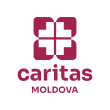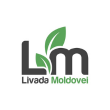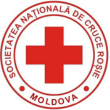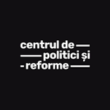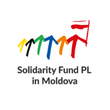Achiziții de bunuri și contractări de servicii
- Detalii
- Categorie: Achiziție bunuri, Contractare Servicii
Design of Sanitary Groups for improving WASH facilities in selected Health Care Facilities
Informațiile prezentate în articolul de mai jos pot să nu mai fie actuale sau să nu mai reflecte activitățile și programele curente. Anunțul este păstrat în arhivă pentru a asigura transparența și accesul public la informațiile despre inițiativele și proiectele implementate anterior.
Request for Expressions of Interest
(Consulting Services – Firms Selection)
Republic of Moldova
Moldova Water Security and Sanitation Project
Credit No.: 7027-MD
Reference No.: MD-PIU-NORLD-376594-CS-CQS
Assignment Title: Design of Sanitary Groups for improving WASH facilities in selected Health Care Facilities
Date: November 08, 2023
The Government of the Republic of Moldova has received financing from the World Bank toward the cost of the Moldova Water Security and Sanitation Project (MWSSP), and intends to apply part of the proceeds for consulting services.
The consulting services (“the Services”) include the development of the design documentation in accordance with the needs of each Health Care institution in order to ensure WASH facilities. The technical documentation provided will serve as a base for the construction and installation of the WASH facilities, helping to ensure that the project meets the intended objectives and standards.
The services are expected to start in December 2023. The expected term of assignment is 3 (three) months from the date of contract signing.
The detailed Terms of Reference (TOR) for the assignment can be found at the following website: https://www.ondrl.gov.md (link: https://ondrl.gov.md/categorie/proiectul-saasm/anunturi-saasm/) or can be obtained at the email address given below.
The Moldova Water Security and Sanitation Project now invites eligible consulting firms (“Consultants”) to indicate their interest in providing the Services. Interested Consultants should provide information demonstrating that they have the required qualifications and relevant experience to perform the Services. The shortlisting criteria are: core business and years in business, relevant experience, technical and managerial capability of the firm as detailed in TOR. Key Experts will not be evaluated at the shortlisting stage. The scores that will be assigned to the consulting firms at the evaluation of the Expression of Interest are: 40 points for general qualification and 60 points for specific experience, in total 100 points. Passing score is 70 points.
The attention of interested Consultants is drawn to Section III, paragraphs, 3.14, 3.16, and 3.17 of the World Bank’s “Procurement Regulations for IPF Borrowers”, dated November 2020 (“Procurement Regulations”), setting forth the World Bank’s policy on conflict of interest.
Consultants may associate with other firms to enhance their qualifications, but should indicate clearly whether the association is in the form of a joint venture and/or a sub-consultancy. In the case of a joint venture, all the partners in the joint venture shall be jointly and severally liable for the entire contract, if selected.
A Consultant will be selected in accordance with the Consultant’s Qualification-based Selection method set out in the Procurement Regulations.
Further information can be obtained at the address below during office hours 09.00 to 17.00 local time in the Republic of Moldova.
Expressions of interest must be delivered in a written form to the address below (in person, or by mail, or by e-mail) by November 24, 2023, 16:00 o’clock, Moldova time, indicating the assignment title in subject line (when sent by e-mail).
Contract address:
P.I. National Office for Regional and Local Development,
Moldova Water Security and Sanitation Project (PIU)
51A, Alexandru cel Bun Street, 2nd floor
mun. Chisinau, Republic of Moldova MD-2012
Tel.: +373 69060896 +373 69265292;
E-mail: tender@ondrl.gov.md
Find below the Annex 1: Terms of Reference for the design of Sanitary Groups for improving WASH facilities in Health Care Facilities
Annex:1 Terms of Reference
Terms of Reference
For
Design Company
Design of Sanitary Groups
for improving WASH facilities in Health Care Facilities
within the
P.I. National Office for Regional and Local Development
- Moldova water security and sanitation project BACKGROUND
The Government of Moldova (GoM) is currently implementing a project supported by the World Bank (IDA) financing the Moldova Water Security and Sanitation Project (MWSSP). The Moldova Water Security and Sanitation Project directly supports the Government’s commitment to Sustainable Development Goal No.6: to achieve universal and equitable access to safe and affordable drinking water, sanitation, and hygiene by 2030 through its Action Program and the National Water Supply and Sanitation Strategy 2014-2028.
The World Bank’s Water Security Diagnostic and Future Outlook[1] showed that there are several pressing challenges to Moldova’s water security, such as (i) inequalities in access, inadequate quality of water supply in small towns and weak performance of service providers; (ii) poor environmental health and environmental pollution due to lack of sanitation and wastewater collection and treatment; (iii) weak institutions, fragmented financing streams and unresolved reform areas which hinder programmatic delivery of services.
Access in water supply and sanitation (WSS) is constrained by large coverage gaps in rural areas, compounded by income status. Compared to other countries in the Danube region, the share of population with access to basic water and sanitation services in Moldova is low. The gap between urban and rural remains one of the largest in Europe and is one of the key water security issues the country is facing. Based on JMP-data[2], gains were made in rural water supply access to drinking water services from piped networks, from 33 percent in 2000 to an estimate 40 percent in 2017, while urban piped service remained almost stable at 85 percent.
Household Budget Survey (HBS) (2018) data provides the picture on national access to a public piped water supply being 70 percent, with urban access at 92.4 percent and rural access at 52.2 percent. However, the water quality of rural piped system is often compromised and below drinking water quality standard. Those not served by public centralized systems rely on so-called self-supply, through private shallow wells. Around one in three people rely on self-supply for their drinking water with 80 percent of wells not compliant with drinking water norms (e.g. nitrates, e-coli). The poorest quintile of the rural population faces the largest obstacles to get connected to a public system and is least able to invest in private piped supply by wells (9 percent), with 42.2 percent of the poorest households collecting water with buckets or carts. In 2018, out of a total of 1,220 centralized water systems, 1,168 were functional, although performance data is not systematically available.
In response to these challenges, the Project Development Objective (PDO) of the MWSSP is to increase access to safely managed water supply and sanitation services in selected rural areas and towns, and to strengthen institutional capacities for water supply and sanitation service delivery. Strengthening institutional capacities for water supply and sanitation service delivery refers to both national level planning and sector development capacities, as well as to improved operational efficiency and delivery at utility level.
The Project will have four components:
Component 1: Increasing access to safely managed WSS services in selected rural areas and towns This component will develop new and rehabilitate existing WSS infrastructure and WASH facilities in rural areas and towns, thus expanding access and quality of services for households, businesses, and public institutions and supporting resilience. Component 1 supports climate adaption through (a) providing reliable centralized water supply protecting vulnerable households from drought and poor water quality; (b) improving wastewater systems, sanitation, and WASH facilities, reducing environmental exposure to pathogens exacerbated by flooding, particularly in towns facing frequent flooding; and (c) ensuring climate-resilient design of all infrastructure for robust functioning under extreme weather events. It consists of two subcomponents:
Subcomponent 1.1: Expanding access and quality of WSS services. This subcomponent will finance climate-resilient investments in towns and rural areas. This includes the following:
(a) Water supply investments: Expansion and rehabilitation of the regional water systems for water supply production and distribution, and service connections for LPAs in selected districts, including the preparation of relevant technical studies and management documents; technical supervision; and citizen engagement activities. This refers to water supply infrastructure in two preliminarily identified subprojects, that is, regional water system expansion for LPAs in Cahul District and the ATU of Gagauzia and a regional water supply system with a surface water treatment plant in Riscani District. Many LPAs, particularly in the south (Cahul) as well as in the northern part along the Prut (Riscani), face shortages of water in the summer, with shallow wells/springs posing a challenge such as in the Prut cluster villages, in the Vulcanesti town, and other villages in Cahul District.
(b) Wastewater investments: Expansion and rehabilitation of wastewater systems in selected towns, including the construction and rehabilitation of sewer networks and service connections, and the construction of new wastewater treatment plants, including the preparation of relevant technical studies and management documents; technical supervision; and citizen engagement activities. This refers to two preliminarily identified subprojects in Soroca and Comrat towns. There are areas in the Comrat town that face frequent flooding, and the Soroca town is also vulnerable directly on the right bank of the Dniester. The project will support the assessment of flood risk and impact at the household level and, in addition to ensuring resilient design of infrastructure, provide measures to reduce the impact of floods where possible.
(c) Pilot for on-site household sanitation: selected rural or peri-urban villages, will benefit from the improvement of on-site household sanitation following a demand-led approach through the provision of technical assistance, the implementation of information campaigns, and the carrying out of civil works. The pilot will be co-financed through the ADA grant. This pilot will demonstrate the use of climate-resilient low-cost technologies for rural sanitation.
Subcomponent 1.2: Improving resilient WASH facilities in public social institutions. This subcomponent will finance works, goods, consulting services, non-consulting services and training/workshops to realize climate-resilient WASH facilities in health care facilities (HCFs) and education institutions and implement hygiene education and behavior change communication program.
Component 2: Strengthening institutional capacity at national and local levels for WSS service delivery. This component focusses on institutional capacities of national and subnational entities and WSS operators for management, planning, regulation and reform implementation, and performance improvement of service providers for green, resilience, and inclusive service delivery. At the national level, development of plans, policies, and regulatory documents will support climate adaptation through climate-resilient planning, and at the local level, performance improvements will deliver climate benefits through reduction of NRW and improvement of energy efficiency. It consists of two subcomponents:
Subcomponent 2.1: Building national institutional capacity for WSS. This subcomponent aims to strengthen critical functions of facilitating and implementing WSS sector reform, investment planning and monitoring, and sector modernization and build capacities to this end of the assigned lead unit/entity within MIRD’s structure. It finances goods, non-consulting services, consulting services, and training/workshops for activities that strengthen institutional capacities for planning, financing, economic regulation, performance monitoring, professional development, and the revision and development of new policies and normative documents.
Subcomponent 2.2: Improving performance of WSS service providers. Subcomponent 2.2 will finance works, goods, consulting services, non-consulting services, and training to support the implementation of a prioritized rolling multiyear PIP of selected WSS operators involved under Subcomponent 1.1. WSS operators will carry out annual assessments on PIP implementation and KPIs, including publication of results and feedback rounds with customers. The financing for selected WSS operators will be allocated based on results. Investments and TA activities identified in the PIPs are based on utility diagnostics and include, but are not limited to, the following: improving technical and commercial operations, improving financial management (FM), HR management, and organization and strategy aspects, including improving asset management systems and inventories, energy efficiency, NRW reduction programs, water metering practices and equipment to improve climate resilience, water safety, and business continuity, and enhancing responsiveness to customers.
Component 3: Project management and coordination. This component will finance operational costs, consulting services, non-consulting services, goods, and training to finance the overall project management cost, including the project team at the Project Implementation Unit (PIU), implementation support consultants at the regional level within MIRD’s RDAs for environmental and social standards implementation, and, at the national level, MIRD as the project implementing entity (PIE). It will finance training costs, including for capacity building in procurement, environmental, and social standards, specialized short-term implementation support consultants, financial audits, project communication and citizen consultations, and monitoring and evaluation (M&E).
Component 4: Contingent emergency response component (CERC). A provisional zero-amount component is included, which will allow for rapid reallocation of credit/loan proceeds from other components during an emergency under streamlined procurement and disbursement procedures. This component allows the Government to request the World Bank to recategorize and reallocate financing from other project components to cover emergency response and recovery costs.
- GENERAL DATA
Carrying out a detailed analysis to ensure school institutions and health care facilities with better hygiene and sanitation conditions, it should be noted that no comprehensive data is available. However, preliminary data from the Ministry of Health (MOH) indicate that at least half of rural HCFs do not have safely managed wastewater and/or drinking water supply services and do not have adequate hygiene. The government set targets for access to WASH services in educational institutions under the WHO-led “Protocol on Water and Health” and anticipated targets for WASH in HCFs in the 2023 governmental action plan.
Inadequate WSS infrastructure directly affects the accumulation of human capital, knowledge, educational outcomes and well-being. Access to improved WASH services positively affects handwashing practices that can reduce the spread of infectious diseases. Improving access to WSS supports broad economic benefits, with disproportionate benefits for the poor. Women and children are among those who benefit most from access to improved services, particularly in health centers.
In order to improve the situation described above, within the Moldova Water Security and Sanitation Project the „Subcomponent 1.2: Improving resilient WASH facilities in public social institutions is to be implemented. Under this sub-component, works, goods, consultancy services, non-consultancy services and training/workshops for the realization of climate-resilient WASH facilities in HCFs and the implementation of the education communication program will be funded for hygiene and behavior change. The World Bank „Moldova Water Security and Sanitation Project (P173076), following the priorities of the Ministry of Health, which will select the priority lists of HCFs, from subproject locations and other prioritized districts within the project will ensure the implementation of activities aimed at connecting the selected institutions to the water sources, to existing centralized water supply networks, connections to sewerage systems or the construction of on-site sanitation facilities and the construction of indoor toilets with adequate handwashing and hygiene facilities, using where appropriate, technologies with low carbon emissions. The design of WASH facilities will address the needs of girls/women (privacy, menstrual hygiene management (MHM) facilities) and be accessible to persons with disabilities.
In January 2023, the lists of institutions were presented by the Ministry of Health to be evaluated in order to identify the WASH (Water, Sanitation, and Hygiene) needs and determine the necessary investments that could be included in the project. Following the needs assessment’s Ministry of Health issued a Decision no. 46-d of 30.01.2023 by which it approved 22 institutions where works will be carried out. Based on the initial assessment, the institutions were divided into three categories, as follows: (i) Major repairs of existing sanitary facilities; (ii) Cosmetic repairs of existing sanitary facilities with changing the sanitary installations; and (iii) Redesigning of existing spaces into a sanitary group.
II.1 Investment: Drawing up the Detailed Execution Design for improving WASH facilities in Health Care Facilities.
II.2 Beneficiary: National Office for Regional and Local Development (NORLD).
II.3 Location: The works that are the subject of this specification will be executed in institutions from the priority regions: Riscani; Soroca; Briceni; Ocnita; Cahul and Basarabeasca (14 institutions)
- OBJECTIVE OF THE ASSIGNMENT
The objective of the assignment is to obtain the project documentation developed in accordance with the needs of each institution (according to the Annex 1) in order to ensure WASH facilities in selected institutions. The technical documentation provided will serve as a guide for the construction and installation of the WASH facilities, helping to ensure that the project meets the intended objectives and standards.
- SCOPE OF WORK
The Consultant is responsible for creating and providing comprehensive technical documentation that includes execution sketches, detailed technical specifications, estimates of required quantities, and associated costs. This documentation will be handed over to the Project Implementation Unit (PIU) upon completion.
The consulting services to be provided include the following Tasks:
Task (1): Needs Assessment
Task (2): Design Concept Development
Task (3): Space Planning and Layout Design
Task (4): Elaboration of the Bill of Quantities (BoQ) with technical description
Task (1): Needs Assessment
The Design company will conduct a comprehensive assessment of existing sanitary blocks in HCF, according to Annex 1 list, to identify areas for improvement in terms of WASH components, such as water supply, sanitation systems, handwashing facilities, and overall layout.
Based on the conclusions drawn from site visits and technical evaluations of the existing situation, the Consultant will establish the requirements related to the technical documentation that needs to be developed and the approvals and initial design documents required to commence the design work (Technical expertise, Urbanism Certificate for design, health approval, topographic survey, connection approvals). All identified needs will be coordinated and approved by the PIU engineer.
Task (2): Design Concept Development
The Consultant shall develop design concepts that address the identified needs, considering factors such as privacy, safety, inclusivity and hygiene.
a) Accessibility and Inclusivity: Incorporate appropriate facilities for menstrual hygiene management within the designated areas. Design the sanitary blocks to be accessible and inclusive for individuals with disabilities. Incorporate features such as ramps, grab bars, and gender-neutral facilities as per applicable guidelines.
b) Menstrual Hygiene Facilities: Designate a area within the sanitary blocks for menstrual hygiene management. Provide private and hygienic spaces for individuals to manage menstruation, including individual or shared cubicles with proper ventilation and disposal facilities. Ensure availability of clean water, soap, and menstrual hygiene products within the designated area.
c) Safety and Security: Implement appropriate security measures, such as lockable doors and proper lighting, to ensure the safety of users. Install suitable ventilation systems to maintain good air quality. Include anti-slip flooring and handrails to prevent accidents and ensure user safety.
d) Hygiene and Maintenance: Use durable and easy-to-clean materials for walls, floors, and fixtures. Ensure proper drainage systems and incorporate regular maintenance plans to keep the sanitary blocks clean, functional, and well-maintained.
e) Compliance and Regulations: Adhere to national construction rules, health and safety regulations, sanitation guidelines, and accessibility standards while designing the sanitary blocks.
Task (3): Space Planning and Layout Design
The Consultant shall create detailed floor plans, including the layout and arrangement of fixtures, fittings, and equipment and engineering network plan (electricity, water, sewage, heating, and ventilation). In case of redesigning spaces, it will be necessary to create detailed floor plans with indicated dismantling/mounting walls. Ensure the gender-separate sanitary blocks for patience and medical staff, meet the specified requirements and adhere to relevant regulations.
When drawing up the Detailed Design, the following acts and normative documents in construction will be used:
- Law on the quality in construction 721 of 02.02.1996;
- Law on authorization of the execution of construction works No. 163 of 09.07.2010;
- NCM A. 07.02-2012 elaboration procedure, consent, approval and content-framework of the project documentation for construction
- NCM G.03.03:2015 interior networks of water and sanitation;
- NCM C.01.12:2018 civil buildings public buildings and constructions
- Other normative documents in construction.
- NCM E.03.02-2014 fire protection of buildings and installations.
- GOST 21.401-88 ”System of design documentation for construction. Production technology. Basic requirements for working drawings.”
Task (4): Elaboration Bill of Quantities (BoQ) with technical description
The design company shall provide a detailed Bill of Quantities (BoQ), specifying the quantities and costs of all materials, equipment, and labor required for the construction of the sanitary blocks in HCFs.
The BoQs should be prepared in accordance with national construction rules, namely CP L.01.01-2012, Forms 1, 3, 5 and 7.
- General requirements
The consulting services requested for Design of Sanitary Blocks for improving WASH facilities in selected HCFs under this Contract (hereinafter referred to as Services) will be carried out as part of the Subcomponent 1.2: Improving resilient WASH facilities in public social institutions.
The deliverables of the Consultant will be used by the team of Moldova Water Security and Sanitation Implementation Unit (hereinafter referred to as the PIU Engineer) for the development of the Bidding Documents for the “Construction and Renovation of sanitary blocks for improving WASH facilities in selected HCFs” and will serve as a basis for the execution of works.
The Consultant will comply with the following requirements in carrying out the services:
(1) All measurements and results of the services shall be in SI (International System of Units).
(2) The order of institutions for intervention will correspond to Annex 1
(3) Before starting the activities, the Consultant will submit an Inception Report within 1 week from Contract signing, drawn up in the English and Romanian languages, which will describe:
- Work methodology;
- Work program;
- Staff allocation schedule.
(4) The Consultant shall provide, and therefore include the associated costs in his Proposal: personnel, transportation and others necessary for the execution of the services.
(5) The drawings will be prepared using the AutoCad software. The drawings and reports to be submitted by the Consultant shall be dimensioned, unless otherwise requested by the PIU Engineer. All documents and reports provided will be in the English and Romanian languages.
(7) The progress of the executed services will be described in the form of a weekly report and sent to the designated address of the PIU Engineer by e-mail at the end of each week throughout the duration of this Contract.
(8) All the concepts, solutions, recommendations or sketches must be presented to the PIU Engineer for approval.
- Qualification requirements and evaluation criteria
Consultant Qualification Requirements:
The Consultant shall furnish documentary evidence (including information about completed contracts and contact information of clients from whom the references could be taken or whom the Client may, when necessary to demonstrate that it meets the following experience requirements:
- Minimum 3 years of proven Consultancy Company’s experience in elaboration of Design of sanitary group in HCFs and of water and sanitation projects;
- Similar experience of technical design for HCF;
- Qualified and certified (in accordance with legislation of Republic of Moldova) technical staff with at least 8 years of specific experience in the above-mentioned works;
- At least 2 similar assignments implemented by technical staff in the last 5 years.
Key Experts Qualification Requirements:
The Consultant shall involve suitably qualified Experts and other professionals, competent enough to carry out their duties in accordance with responsibilities detailed in the TOR. The Contractor is strongly encouraged to involve qualified female candidates for this activity.
A short description of the ‘key personnel’ with their experience and anticipated tasks in the performance of the project must be presented.
The below listed staffs are indicative. The Consultant may propose additional staff to ensure successful completion of the task. However, the Consultant should ensure that the financial proposal includes these additional staff. The Consultant must provide all required staff to carry out all the stated tasks and other duties in the project.
In the proposal, the Consultant shall include a detailed time schedule showing each specific task that will be used as a tracking sheet to meet the project deliverables.
In accordance with Government Decision No. 329 from 23.04.2009 for the approval of the Regulation regarding the technical-professional attestation of specialists with construction activities, in the Client’s view, the Consultant’s team shall comprise (but not necessarily be limited to) the following Key personnel:
- Lead design engineer – Bachelor Degree in engineering; at least 5 years of general professional experience; technical attestation/license in design of water and sanitation projects; experience in at least 2 similar assignments within the last 5 years;
- Certified designers in categories 3a; 4a; 4j; 5a; 5b; 7b; 8a - Bachelor Degree in engineering, experience in minimum 2 similar assignments executed within the last 5 years;
- Certified cost estimator in category 12a - Bachelor Degree in engineering, experience in minimum 2 similar assignments executed within the last 5 years.
- DELIVERABLES
During the assignment, the Consultant shall develop and submit the following deliverables:
1. Revised BoQs shall comprise detailed cost estimation and tender forms 1, 3, 5, 7 in excel and winsmeta/devizeonline/devize.md format.
2. Project sketch in A3 format shall comprise (but not limited to)
- Drawings in A3 format (Cad and Pdf)
- ACS (architecture, constructive solutions);
- EL/FPE (electric lighting/force power equipment);
- WSSW (water supply, sewage system – internal/external);
- HV (Heating and Ventilation);
- BoQs (detailed cost estimation and tender forms 1, 3, 5, 7) in excel and winsmeta/devizeonline/devize.md format, signed and stamped by the state service for verification and expertise of projects and constructions.
3. Execution project in A3 format shall comprise (but not limited to):
- Statement Of Works (SOW)
- Drawings in A3 format (Cad and Pdf)
- ACS (architecture, constructive solutions);
- EL/FPE (electric lighting/force power equipment);
- WSSW (water supply, sewage system – internal/external);
- HV (Heating and Ventilation);
- GP (General Plan and land systematization);
- OCW (Organization of the Construction Works).
- BoQs (detailed cost estimation and tender forms 1, 3, 5, 7) in excel and winsmeta/devizeonline/devize.md format
- Specifications (in word and excel format)
- Approvals from all relevant authorities (Public Health Agency, Fire Department and Environmental Protection Agency)
- All other relevant documents
- Technical expertise of the detailed designs and Bill of Quantities by the state service for verification and expertise of projects and constructions
- Expense quote Form 1, 3, 5, 7 signed and stamped by the State Enterprise Service for Verification and Expertise of Projects and Constructions.
More detailed deliverables for each institution are presented in Annex 1.
- Inception Report: Within 1 week of the assignment commencement, the Consultant shall submit to the Client a draft Inception report.
- The deliverables will be presented in 3 copies on paper and in electronic format (DWG, PDF, WORD).
- Timing
The services are expected to start in the 4th Quarter of the year 2023. The expected term of assignment is: 3 (three) months from the date of contract sign or other date as agreed in the contract.
All deliverables shall be submitted to the Client, for further coordination/approval by the Beneficiary, NORLD and other stakeholders as might be appropriate.
- Reception of works
The documents will be approved by the Client up to 15 days of their delivery.
- INSTITUTIONAL ARRANGEMENTS
The Consultant's activity will be carried out in close collaboration with and under the guidance of the delegated persons from Project Implementation Unit, under the Public Institution National Office for Regional and Local Development.
The Consultant's deliverables will be approved for financing only as a result of the signing of an acceptance certificate signed by P.I. National Office for Regional and Local Development in the role of institution with fiduciary responsibilities (the Client), North or South Regional Development Agency, LPA’s, Ministry of Infrastructure and Regional Development and the Consultant as a service provider.
ANNEX 1
Deliverables for each institution
Time Schedule - Activities
|
No. |
Locality |
The name of the institution |
Description of activities |
Deliverables |
Delivery time |
|
1. |
r. Briceni, s. Mărcăuți |
OMF |
1. Support for obtaining the urbanism certificate. 2. Presentation of the project sketch for approval by the PIU. 3. Execution project for the reorganization of an existing space into a sanitary group. Compartments: · Demolition plan; · Installation plan; · Survey plan showing the placement of sanitary installations; · Interior engineering networks (cold/hot water, sewage, electricity, heating, and ventilation); · Exterior networks (water and sewage). 4. Preparation of the cost estimate and bill of quantities (Form 1, 3, 5, 7). |
1. Execution project with all compartments included in A3 format, signed, stamped, and verified. 2. Cost estimate - Forms 1, 3, 5, and 7 signed and stamped by a certified cost estimator. 3. Verification reports for the project documentation and cost estimate. |
3 months after obtaining the urbanism certificate for design |
|
2. |
r. Ocnița, s. Dîngeni |
OMF |
|||
|
3. |
r. Soroca, s. Cosăuți |
CS |
|||
|
4. |
r. Soroca, s. Volovița |
OMF |
1. Support for obtaining the urbanism certificate. 2. Presentation of the project sketch for approval by PIU. 3. Execution project for the repair of existing sanitary groups. Compartments: · Demolition plan; · Installation plan; · Survey plan showing the placement of sanitary installations; · Interior engineering networks (cold/hot water, sewage, electricity, heating, and ventilation); · Exterior networks of sewage. 4. Elaboration of the cost estimate and the quantity list (Forms 1, 3, 5, 7). |
1. Execution project with all compartments included in A3 format, signed, stamped, and verified. 2. Cost estimate - Forms 1, 3, 5, and 7 signed and stamped by a certified cost estimator. 3. Verification reports for the project documentation and cost estimate. |
3 months after obtaining the urbanism certificate for design |
|
5. |
r. Briceni, s. Cotiujeni |
OMF |
|||
|
6. |
r. Soroca, s. Rubelnița |
OMF |
1. Support for obtaining the urbanism certificate. 2. Presentation of the project sketch for approval by PIU. 3. Execution project for the reorganization of an existing space into a sanitary group. Compartments: · Demolition plan; · Installation plan; · Survey plan showing the placement of sanitary installations; · Interior engineering networks (cold/hot water, sewage, electricity, heating, and ventilation); 4. Elaboration of the cost estimate and quantity list (Form 1, 3, 5, 7). |
1. Execution project with all compartments included in A3 format, signed, stamped, and verified. 2. Cost estimate - Forms 1, 3, 5, and 7 signed and stamped by a certified cost estimator. 3. Verification reports for the project documentation and cost estimate. |
3 months after obtaining the urbanism certificate for design |
|
7. |
r. Briceni, s. Tabani |
OMF |
1. Support for obtaining the urbanism certificate. 2. Presentation of the project sketch for approval by PIU. 3. Execution project for the construction of an annex with the purpose of a sanitary group. Compartments: · Architecture; · Structure; · Facades; · Demolition plan; · Installation plan; · Survey plan with the location of sanitary installations; · Interior engineering networks (cold/hot water, sewage, electricity, heating, and ventilation); · Exterior networks (water and sewage) – up to 0.1 km. 4. Preparation of the cost estimate and quantity list (Forms 1, 3, 5, 7). |
1. Execution project in A3 format, signed, stamped, and verified by SSVEPC. 2. Cost estimate - Forms 1, 3, 5, and 7 signed and stamped by SSVEPC. 3. Verification reports for the project documentation and cost estimate. 4. Topographical survey – up to 10 acres |
3 months after obtaining the urbanism certificate for design |
|
8. |
r. Briceni, s. Caracușenii Vechi |
OMF |
|||
|
9. |
or. Basarabeasca |
CS |
1. Field measurements execution. 2. Presentation of the project sketch indicating the placement of sanitary installations and engineering networks. 3. Preparation of the cost estimate and quantity list (Form 1, 3, 5, 7). |
1. Project sketch in A3 format. 2. Cost estimate. Forms 1, 3, 5, and 7 signed and stamped by the certified cost estimator. |
1 month after signing the contract |
|
10. |
r. Basarabeasca, s. Carabetovca |
OMF |
1. Support for obtaining the urbanism certificate. 2. Presentation of the project sketch for approval by PIU. 3. Execution project for the repair of existing sanitary groups. Compartments: · Demolition plan; · Installation plan; · Survey plan showing the placement of sanitary installations; · Interior engineering networks (cold/hot water, sewage, electricity, heating, and ventilation); · Exterior networks of sewage. 4. Elaboration of the cost estimate and the quantity list (Forms 1, 3, 5, 7). |
1. Execution project with all compartments included in A3 format, signed, stamped, and verified. 2. Cost estimate - Forms 1, 3, 5, and 7 signed and stamped by a certified cost estimator. 3. Verification reports for the project documentation and cost estimate. |
3 months after obtaining the urbanism certificate for design |
|
11. |
r. Cahul, s. Alexandru Ioan Cuza |
OMF |
1. Support for obtaining the urbanism certificate. 2. Presentation of the project sketch for approval by PIU. 3. Execution project for the reorganization of an existing space into a sanitary group. Compartments: · Demolition plan; · Installation plan; · Survey plan showing the placement of sanitary installations; · Interior engineering networks (cold/hot water, sewage, electricity, heating, and ventilation); 4. Elaboration of the cost estimate and quantity list (Form 1, 3, 5, 7). |
1. Execution project with all compartments included in A3 format, signed, stamped, and verified. 2. Cost estimate - Forms 1, 3, 5, and 7 signed and stamped by a certified cost estimator. 3. Verification reports for the project documentation and cost estimate. |
3 months after obtaining the urbanism certificate for design |
|
12. |
r. Cahul, s. Lebedenco |
OMF |
|||
|
13. |
r. Cahul, s. Ursoaia |
OMF |
1. Presentation of the project sketch for approval by PIU. 2. Execution project for the repair of existing sanitary groups. Compartments: · Demolition plan; · Installation plan; · Survey plan showing the placement of sanitary installations; · Interior engineering networks (cold/hot water, sewage, electricity, heating, and ventilation); 3. Elaboration of the cost estimate and quantity list (Form 1, 3, 5, 7). |
1. Execution project with all compartments included in A3 format, signed, stamped, and verified. 2. Cost estimate - Forms 1, 3, 5, and 7 signed and stamped by a certified cost estimator. |
3 month after signing the contract |
|
14. |
r. Cahul, s. Pelinei |
OMF |
1. Support for obtaining the urbanism certificate. 2. Presentation of the project sketch for approval by PIU. 3. Execution project for the construction of an annex with the purpose of a sanitary group. Compartments: · Architecture; · Structure; · Facades; · Demolition plan; · Installation plan; · Survey plan with the location of sanitary installations; · Interior engineering networks (cold/hot water, sewage, electricity, heating, and ventilation); · Exterior networks (water and sewage) – up to 0.1 km. 4. Preparation of the cost estimate and quantity list (Forms 1, 3, 5, 7). |
1. Execution project in A3 format, signed, stamped, and verified by SSVEPC. 2. Cost estimate - Forms 1, 3, 5, and 7 signed and stamped by SSVEPC. 3. Verification reports for the project documentation and cost estimate. 4. Topographical survey – up to 10 acres |
3 months after obtaining the urbanism certificate for design |
[1] https://openknowledge.worldbank.org/handle/10986/34809
[2] Joint Monitoring Program data is derived based on linear extrapolations using national survey data and JMP population estimates; discrepancies between nationally reported data can be found due to differences in estimation methods and definitions. See also: https://washdata.org/data
- "Mă Implic, Phase 2" project is hiring a Legal Advisor on National Reforms and Public Administration
- CRS is hiring ICT4D and Data Management Officer
- Selectarea unui Consultant pentru dezvoltarea dimensiunii de comunicare, elaborarea planului de Advocacy 2026-2027 și identificarea sinergiilor / colaborărilor relevante
- Agenția de Guvernare Electronică anunță concurs de angajare pentru suplinirea postului vacant de specialist(ă) în testarea de software (QA specialist)
- Eastern Partnership (EaP) Countries Project Coordinator (F/M) 100% - Helvetas Reconomy Program
Achiziții și Contractări pe Telegram
Nu pierdeți niciun anunț de achiziție bunuri/contractare servici postat pe site! Urmăriți Canalul dedicat pe Telegram:

Top organizatii
- Delegația Uniunii Europene (UE)
- Ambasada SUA
- Fundatia Soros-Moldova
- Centrul pentru Jurnalism Independent (CJI)
- Asociația Promo-LEX
- Fundatia Est-Europeană
- Asociatia Presei Independente (API)
- Deutsche Gesellschaft für Internationale Zusammenarbeit (GIZ)
- Institutul pentru Politici și Reforme Europene (IPRE)
- IDIS Viitorul
2025 CIVIC DIGITAL SOLUTIONS
Email: support@portal.civic.md



